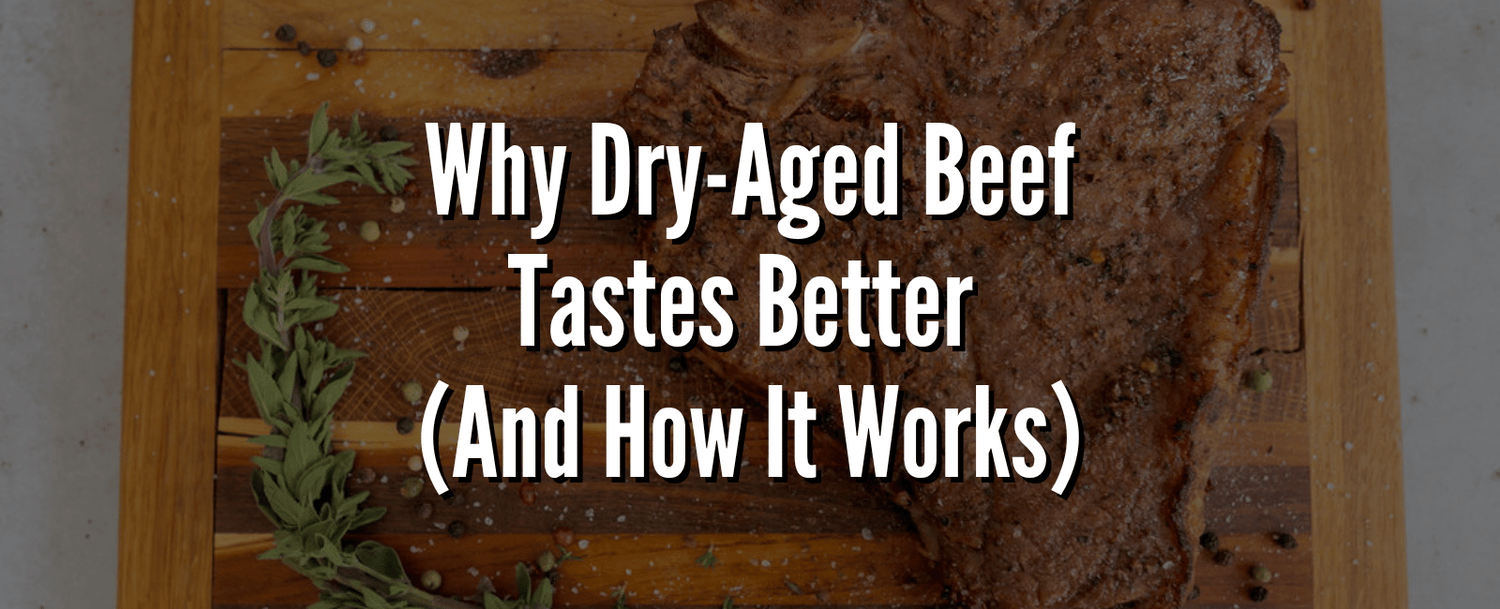Hi! My name is Julie, and I work for Oak Barn Beef, mostly on Saturdays since I’m still in high school. I got the job last fall when my volleyball coach recommended me to Hannah, and I thought I had a pretty good idea of what I was getting into. I grew up on a feedlot, had done my fair share of chores, and figured I already knew plenty about beef and cattle.
Turns out, I had a lot more to learn.
Since working here, I’ve realized there’s a big difference between raising cattle and getting beef from the farm to someone’s dinner plate. Here are five things that really stood out to me and might surprise you too:
1. Dry-Aging Adds Serious Flavor
I’d heard the term “dry-aged beef” before, but didn’t know what it actually meant or how much it mattered. At Oak Barn Beef, all our steaks are dry-aged in a humidity-controlled room. This process slowly removes moisture and naturally breaks down the meat's fibers, making it more tender and giving it a deeper, richer flavor.
It’s one of the biggest differences between average beef and truly great beef, and something I wish more people knew about.
2. Steak Cuts Aren’t Just Fancy Names
Sure, I knew there were different types of steaks, but I didn’t realize how much they vary or why. Each cut comes from a specific part of the cow, with different levels of tenderness, marbling, and flavor.
Filet mignon is prized for its tenderness, ribeyes for their rich marbling, and sirloin for being a leaner, budget-friendly option. The price often reflects the cut’s tenderness and flavor.
3. Shipping Beef is an Art and a Science
Before working here, I never thought twice about how meat got from point A to point B. Now I know firsthand that shipping beef, especially frozen beef, requires a carefully packed box with premium insulation and dry ice to keep everything frozen solid during transit.
That’s how we make sure customers in all 50 states receive our beef in perfect condition.
4. Freezer Space is a Must for Buying in Bulk
At home, we always had beef on hand straight from the butcher. But now I understand why we get so many questions about freezer space from first-time buyers. When you're buying a Quarter of Beef, you’re receiving around 100 to 125 pounds of meat, so having a dedicated freezer space is a must.
Before you buy in bulk, make sure your freezer is cleared out and ready to go. It’s worth it.
5. There’s a Big Difference Between Grocery Store and Local Beef
This one really changed how I shop. Grocery store beef can be decent, but it’s hard to know where it came from, or how it was raised. With local beef, especially from a family farm like Oak Barn Beef, you know the story behind your food. You know the people. You know the practices. And you know it’s fresh, high-quality, and raised with care.
Working here has been a humbling and delicious experience. I came in thinking I knew it all and left with a whole new appreciation for what goes into producing premium, local beef.
Want to try it for yourself? Our Quarter of Beef Package is a great way to stock your freezer and taste the difference. Shop Now!





